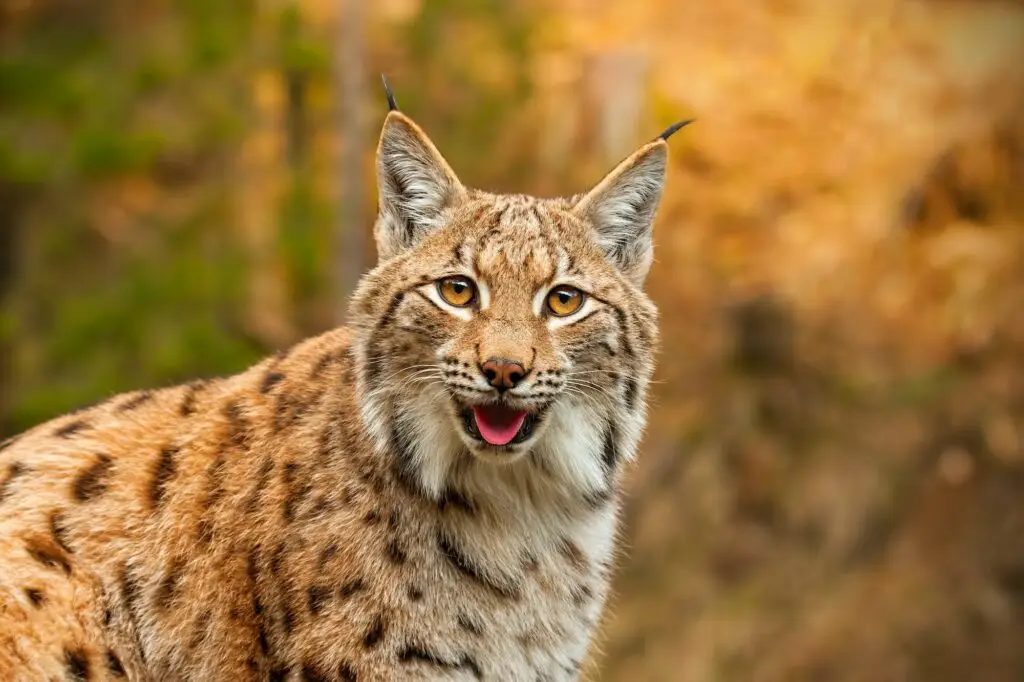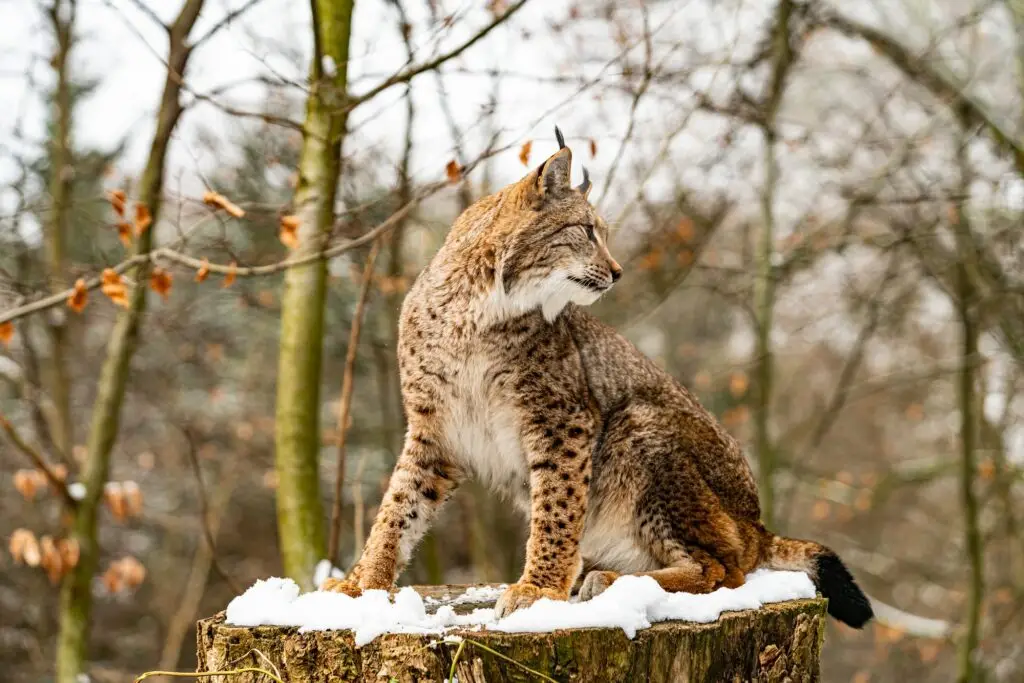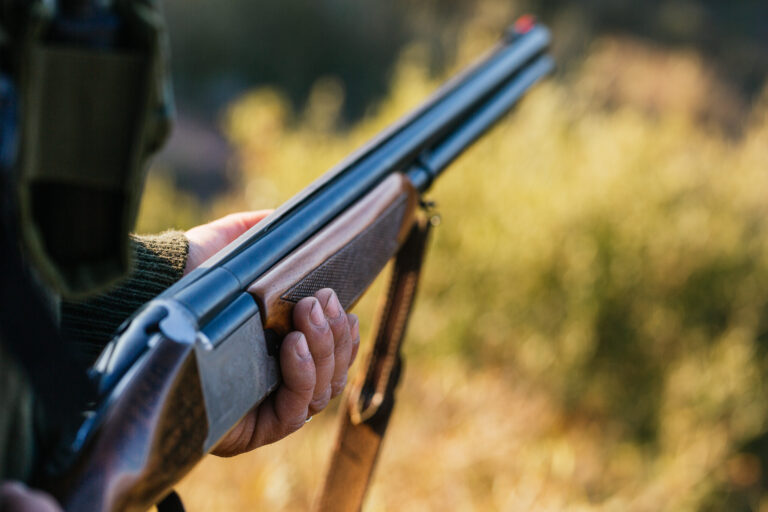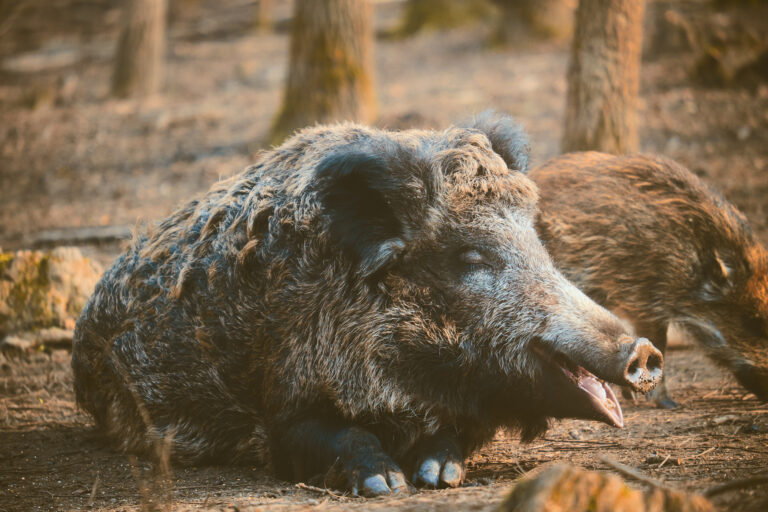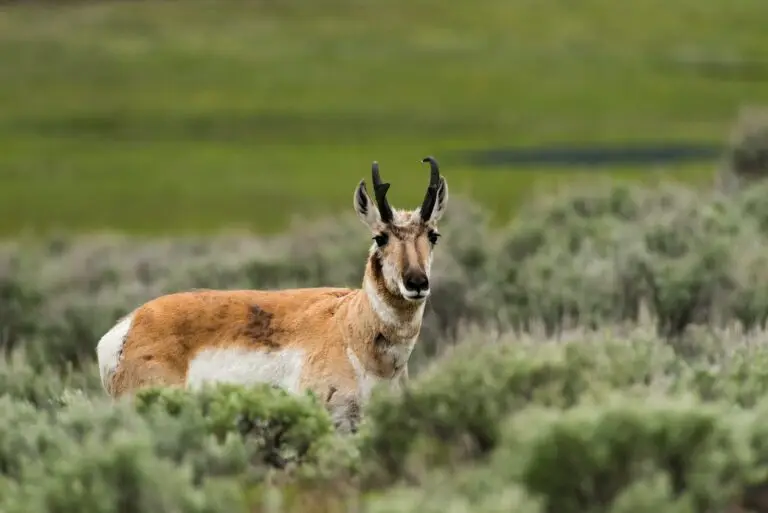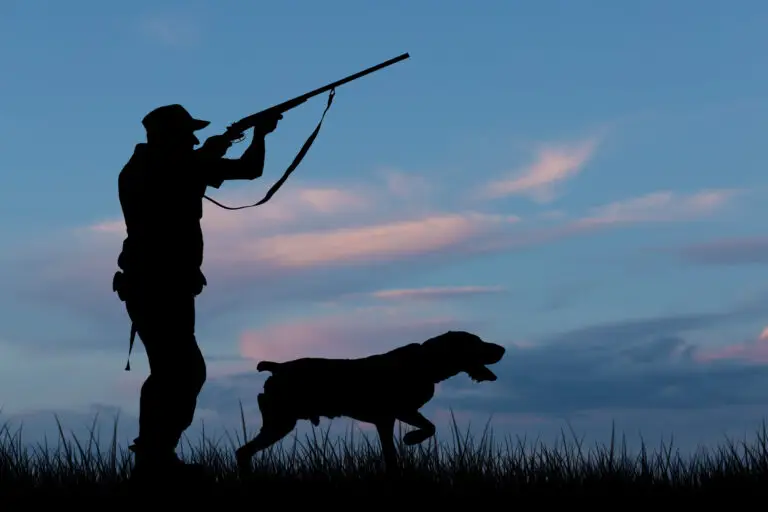Bobcat hunting is an exhilarating and challenging pursuit that requires skill, knowledge, and patience. Something about hunting a predator has always given me an extra boost of adrenaline, and few things are more satisfying than using the fur of an animal that you feel.
This guide will cover the basics of bobcat hunting, how to get into it, techniques, gear, regulations, and general tips to give you an idea of what this part of the sport entails. Keep reading to enhance your success in the field!

Understanding Bobcats
Before embarking on a bobcat hunting adventure, it’s essential to have a solid understanding of the species you’ll be pursuing. Bobcats, scientifically known as Lynx rufus, are some really cool-looking medium-sized wildcats native to North America. Here are some key aspects to know about these fascinating little guys:
Physical Characteristics
Bobcats have distinct physical features that set them apart from other animals. They have a compact and muscular build and fully grown adults tend to weigh between 15 and 30 pounds.
Their name comes from their short, “bobbed” tail, which measures to just about 4 to 7 inches in length. One of their most recognizable traits is their tufted ears, which are black on the back and have a white spot in the center.
Most importantly, their coats vary in color and pattern, ranging from light brown or gray to reddish-brown, with spots or stripes that provide effective camouflage. These furs can make a variety of gorgeous decorations and clothing!
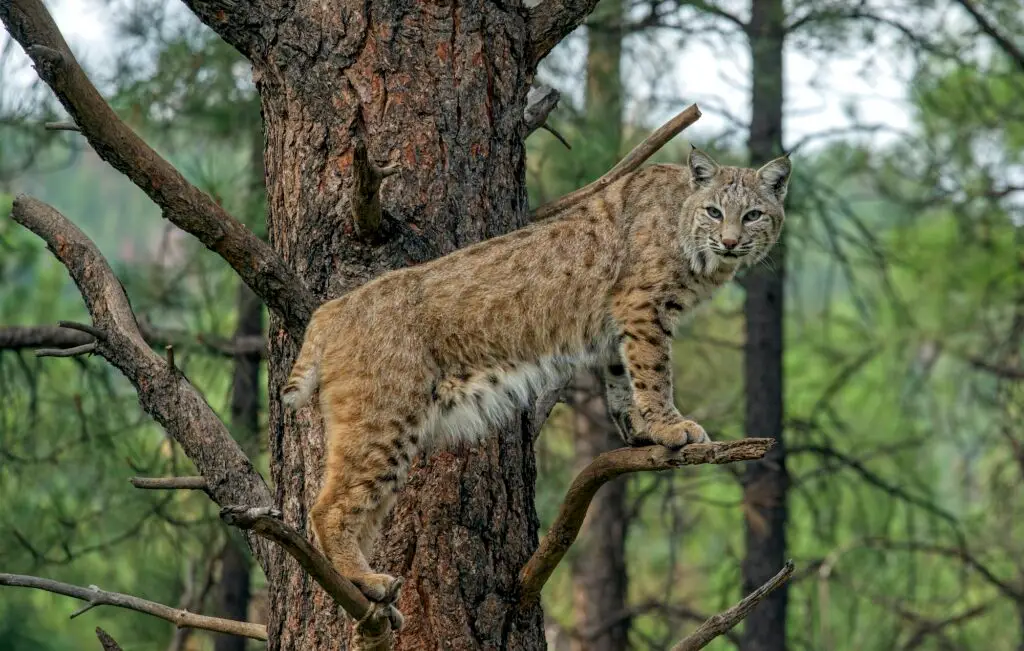
Habitat and Range
Bobcats are highly adaptable and can be found pretty much all over North America. In fact, they’re actually known to thrive in diverse environments such as forests, swamps, deserts, and mountainous regions.
Their range extends from southern Canada through the United States and into Mexico. I recommend doing some research on Bobcat habitat preferences, as this will greatly help you narrow down the best hunting locations for your specific state.
Behavior and Diet
Bobcats are primarily solitary animals, with individuals maintaining exclusive territories that can range from a few square miles to dozens of square miles. They are generally nocturnal or crepuscular (active during twilight hours), making them more challenging to spot during daylight hours.
Bobcats are opportunistic hunters and their diet consists mainly of small mammals like rabbits, squirrels, mice, and voles. They are also known to prey on birds, reptiles, and occasionally larger mammals such as deer (though rare).
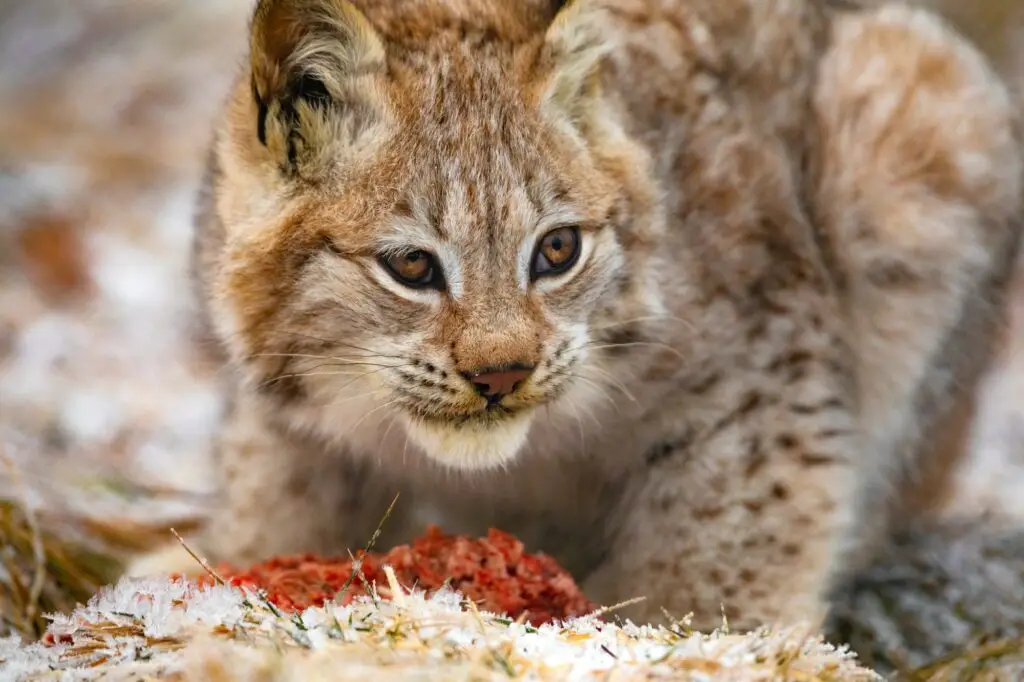
Communication
Bobcats communicate through various vocalizations, scent marking, and body language. They produce vocalizations that include growls, hisses, yowls, and screams, which are used for territory marking, attracting mates, and showing off during aggressive encounters. Scent marking, typically done by just peeing all over the place, helps them establish and maintain their territories.
Regulations and Permits:
When it comes to bobcat hunting, it is crucial to familiarize yourself with the local hunting regulations and obtain the necessary permits and licenses required for your region.
Hunting regulations are in place to ensure sustainable populations, protect the species, and maintain the balance of ecosystems through conservation efforts funded by us hunters. If you wanna learn more about hunting regulations and who sets the rules, I recommend checking out these two articles: “What Type Of Information Would You Find” In A Hunting Regulations Publication” and “How Does Wildlife Conservation Laws Benefit Hunters?”

Research Local Regulations
Regulations regarding bobcat hunting can vary significantly between states, provinces, and even specific regions within those jurisdictions. It’s essential to thoroughly research and understand the specific regulations that apply to the area where you plan to hunt.
The best way to ensure that you’re all up to speed is by checking your state’s hunting government pages. For example, as a Washingtonian, I would go here.
Bag Limits
Bag limits refer to the number of bobcats you can snag during a hunting season. Limits are set to prevent over-harvesting and ensure sustainable populations, which is especially important when it comes to animals like these.
Bag limits are going to vary from state to state and year to year based on factors such as the health of the population, habitat conditions, and conservation goals. Make sure you know the bag limits for bobcats in your area and adhere to them strictly!
Season Dates
Each jurisdiction sets specific dates for the bobcat hunting season. It is essential to be aware of these dates as hunting outside the designated season can result in legal consequences.
Hunting seasons are often determined based on factors such as bobcat breeding cycles, population dynamics, and habitat conditions. Check the official hunting regulations on your government websites, or consult with local wildlife authorities to determine the exact season dates for bobcat hunting in your state!
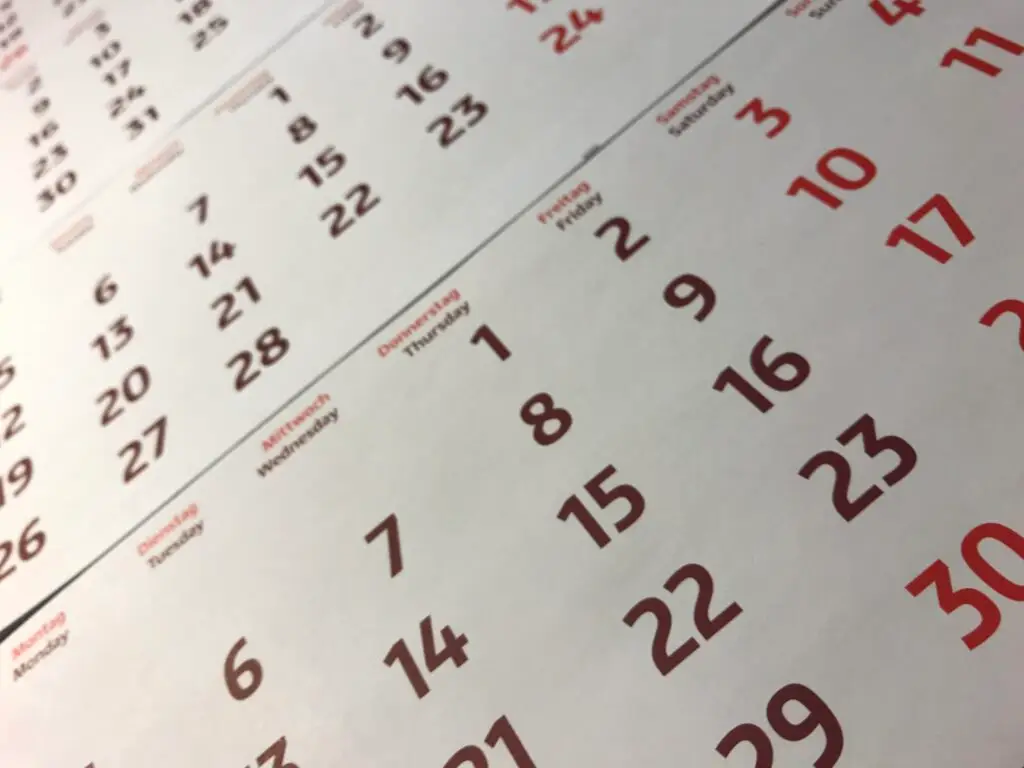
Permit and License Requirements
In addition to understanding the regulations, it’s essential to obtain the necessary permits and licenses. These permits are typically specific to bobcat hunting and may have associated fees.
Contact your local wildlife agency or licensing authority to obtain the required permits and licenses. Ensure you have the necessary documentation with you while hunting and abide by the conditions specified in the permits. I know that in Washington for example, bobcat permits are a bit trickier to get than a lot of other animals, so keep that in mind based on where you are.
Reporting and Record-Keeping:
A lot of states require hunters to report their harvested bobcats or provide information for data collection purposes. This could include details such as the location of the harvest, sex of the bobcat, and other relevant information.
Make sure you write as much as you feel is relevant down. Compliance with reporting requirements is crucial for wildlife management and conservation efforts and will make sure we’ll have lots of bobcats to keep hunting in the future.
Habitat and Tracking
Bobcats inhabit a range of habitats, including forests, swamps, deserts, and mountains. To increase your chances of locating bobcats, focus on areas with abundant prey species such as rabbits, squirrels, and small rodents.
Also do some research on your state’s bobcats, as because of their adaptability will often have different preferences based on their location. A Minnesota bobcat might act different than a Utah one, so keep that in mind.
When out in the brushes, look for signs of bobcat activity, such as tracks, scat, scratch marks on trees, and partially eaten prey. Understanding their habitat preferences and tracking their movements will, like with any other game animal, significantly increase your chance of success.
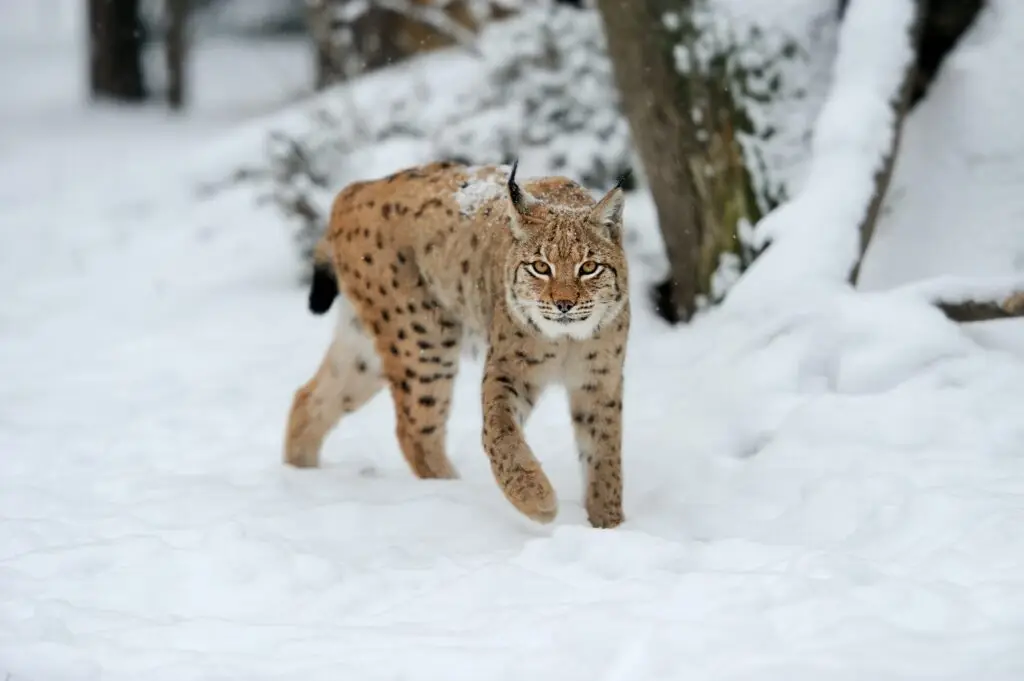
Gear and Equipment
Firearm
Select a firearm suitable for bobcat hunting, such as a .22 or .17 caliber rifle or a shotgun with appropriate loads. Ensure familiarity with your chosen firearm and practice shooting to improve accuracy. If you’re looking for some more information on what to look for when purchasing a firearm, check out our article on the topic here.
Optics
Invest in a quality pair of binoculars to spot bobcats at a distance. A spotting scope can also be useful for detailed observation during glassing sessions!
Calls
Bobcats are known to respond to distress calls by imitating wounded prey. Consider using electronic or mouth-blown calls to lure them within range. Experiment with various sounds like rabbit distress or rodent squeaks to determine what works best in your area.
Camouflage Clothing
Invest in some solid camouflage clothing that matches the local environment to blend in seamlessly with your surroundings.
Field Dressing Kit
Pack a field dressing kit including a sharp hunting knife, latex gloves, and plastic bags for preserving bobcat hides and salvaging edible portions of the animal.

Hunting Techniques:
There are a few different ways you can hunt bobcats, and they’ll vary depending on your preferences and location. The main three to worry about are glassing, calling, and trapping.
Glassing + Spot-and-Stalk
This the exclusively the way I hunt bobcats, and most prey. Use binoculars or a spotting scope to scan the landscape while trekking through the wild. Once you spot a bobcat you employ a “spot-and-talk” approach, where you take advantage of your camouflage and environment to stealthily close the distance.
Keep the bobcat in your sights and get within range without being detected. There is nothing more satisfying than landing a kill after skillfully navigating through the brushes to get close enough!
Predator Calling
If you’re a chiller hunter who likes to hang out in the same spot, this might be the best way for you. Bobcats are responsive to distress calls, making predator calling an effective technique.
Position yourself in a concealed spot where you’ve found indicators of bobcat activity, initiate distress calls, and be patient. Use intermittent calls and allow sufficient time between sequences for a bobcat to approach. Kinda like fishing. But with a gun.
Trapping
Trapping is another viable method for capturing bobcats. Research local trapping regulations, learn proper techniques, and use traps specifically designed for bobcats. Ensure you have the necessary knowledge and skills before attempting trapping.
I’d go further in-depth on this one but quite frankly: I think it removes all the fun out of hunting and don’t recommend it.
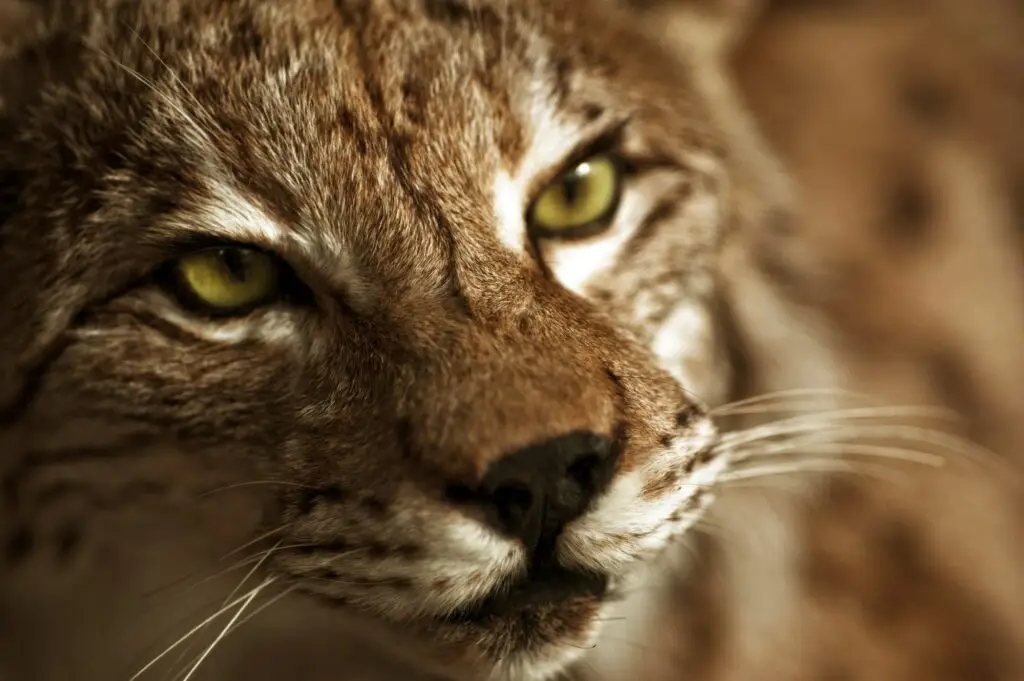
Safety Considerations
Safety is of utmost importance when engaging in bobcat hunting or any hunting activity. It is crucial to prioritize safety at all times to prevent accidents and ensure a responsible hunting experience. Here are some key safety considerations to keep in mind:
Familiarize Yourself with Firearm Regulations:
Before heading out on a bobcat hunting trip, or any hunting trip at all, it’s crucial that you follow all the safety precautions that ensure the health of you and anyone around you. These are more general hunting safety tips, but they’re important – you’re operating a firearm with the intention to kill, after all.
Inform Someone About Your Plans
Before embarking on a hunting trip, always inform a trusted person about your plans. Share details such as your expected return time, hunting location, and any other relevant information.
I personally always keep an AirTag on me that my buddy has access to on his “Find My” — that way I can be tracked regardless of phone battery and service.
Positive Target Identification
One of the most critical aspects of hunting safety is positively identifying your target before taking a shot. Never shoot at a movement, sound, or mere glimpse of an animal without confirming its identity.
Take the time to observe and positively identify the target as a bobcat before firing. Avoid mistaking other animals or non-target species for bobcats. Easier said than done, I know, but if you’re jumpy and trigger-happy, I might suggest you stay away from the bobcats for now – as they’re quick, elusive, and like to do little jump scares out of the brushes.
Be Aware of Your Surroundings
Maintain situational awareness while hunting. Be mindful of your surroundings and watch for other hunters or outdoor enthusiasts who may be in the vicinity. Please please please be aware of potential unexpected hazards such as steep cliffs, dense vegetation, or bodies of water!
Respect Private Property Boundaries
Always respect private property boundaries while hunting. Obtain permission from landowners before accessing or hunting on their property. Be mindful of signs indicating private property or no-trespassing areas. Hunting without permission is illegal and can lead to legal consequences.
Carry Safety Equipment
Bring essential safety equipment with you, such as a first aid kit, a means of communication (such as a cell phone or two-way radio), and any other necessary emergency supplies. My uncle always said: “Better to have it and not need it, than need it and not have it.”
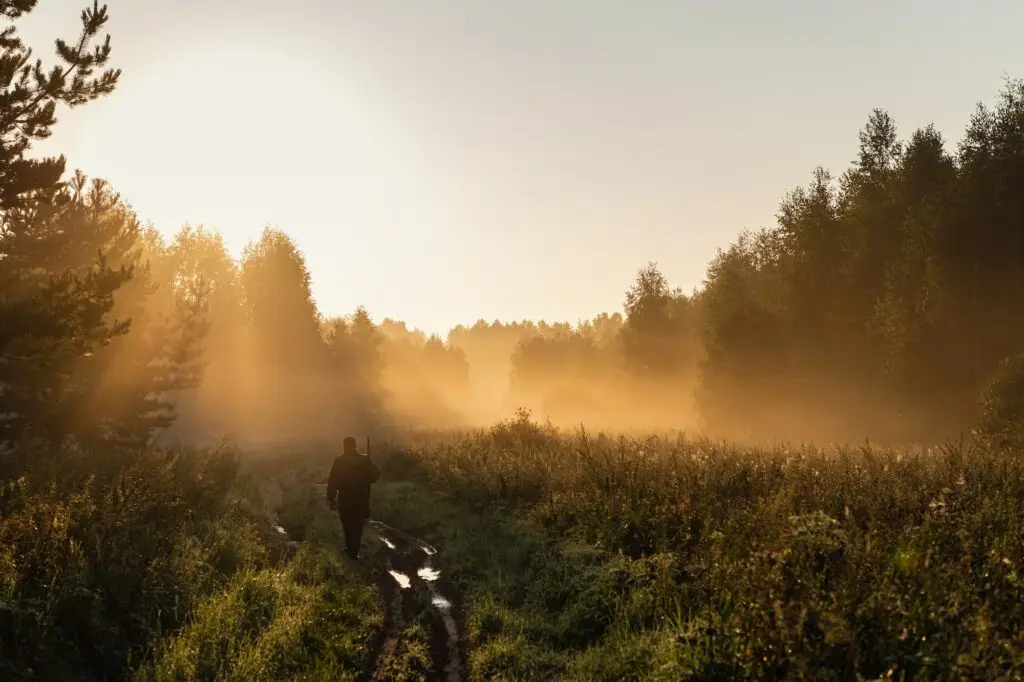
To Hunt a Bobcat, You Must Become the Bobcat!
Bobcat hunting definitely takes hunting to the next level, in my opinion. Especially if you’re used to deer, waterfowl, or more prey-like animals. Bobcats are hunters themselves and therefore employ a lot of the same strategies in their hunting of prey that we do for them.
By understanding their behavior, using the proper techniques, and adhering to hunting regulations, you can ensure one of the most rewarding hunting adventures of your life! Embrace the joy of hunting through ethical practices, respect for your environment, and appreciation of the beautiful nature we are blessed with.
The bobcat is a majestic and beautiful predator and deserves all your respect when chasing it. To hunt a bobcat, you must think like one, so make sure you employ the strategies in this guide to guarantee success.
Good luck, and happy hunting!
Looking for more guides, tips, and tricks? Check out our extensive library of hunting-related content here!
